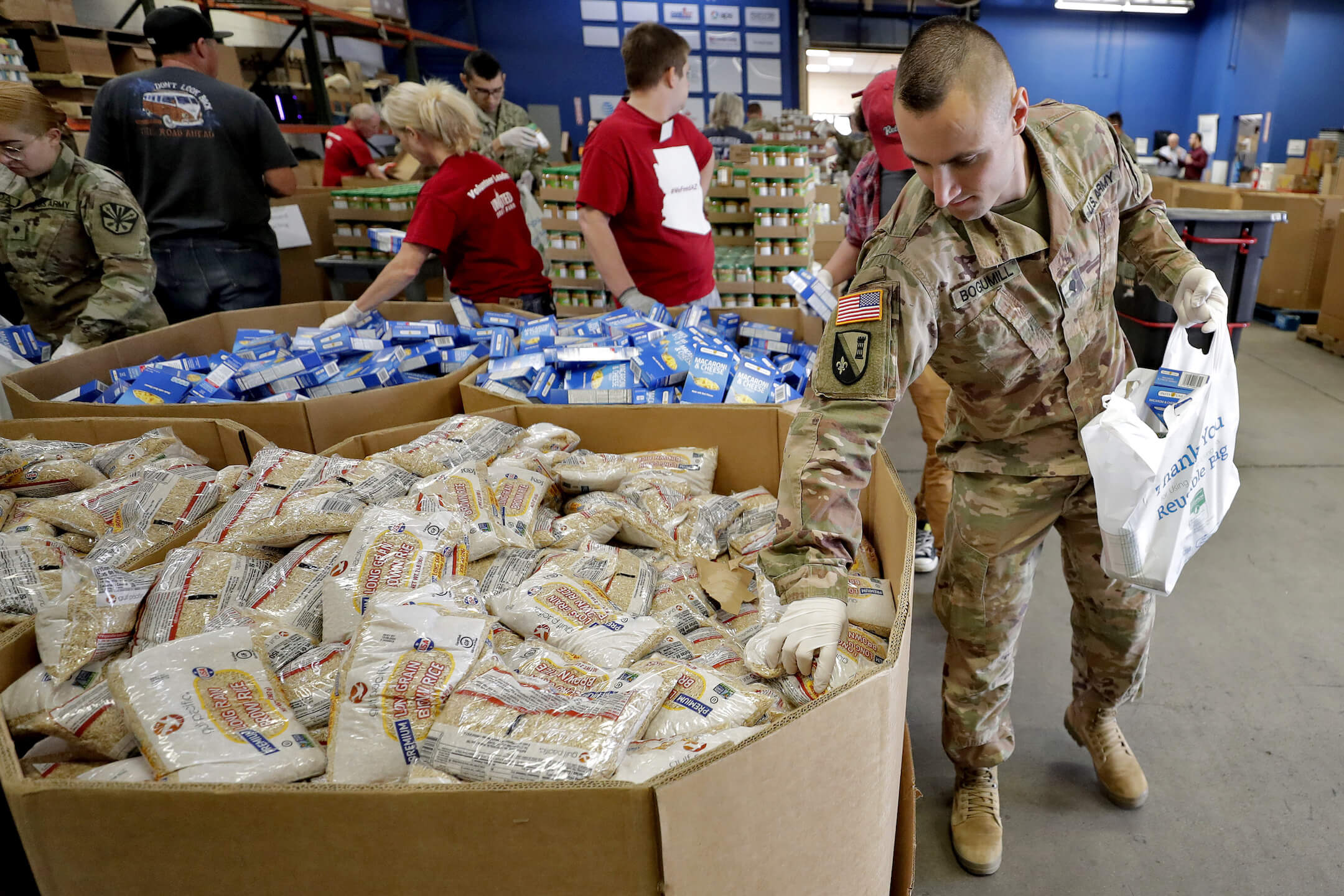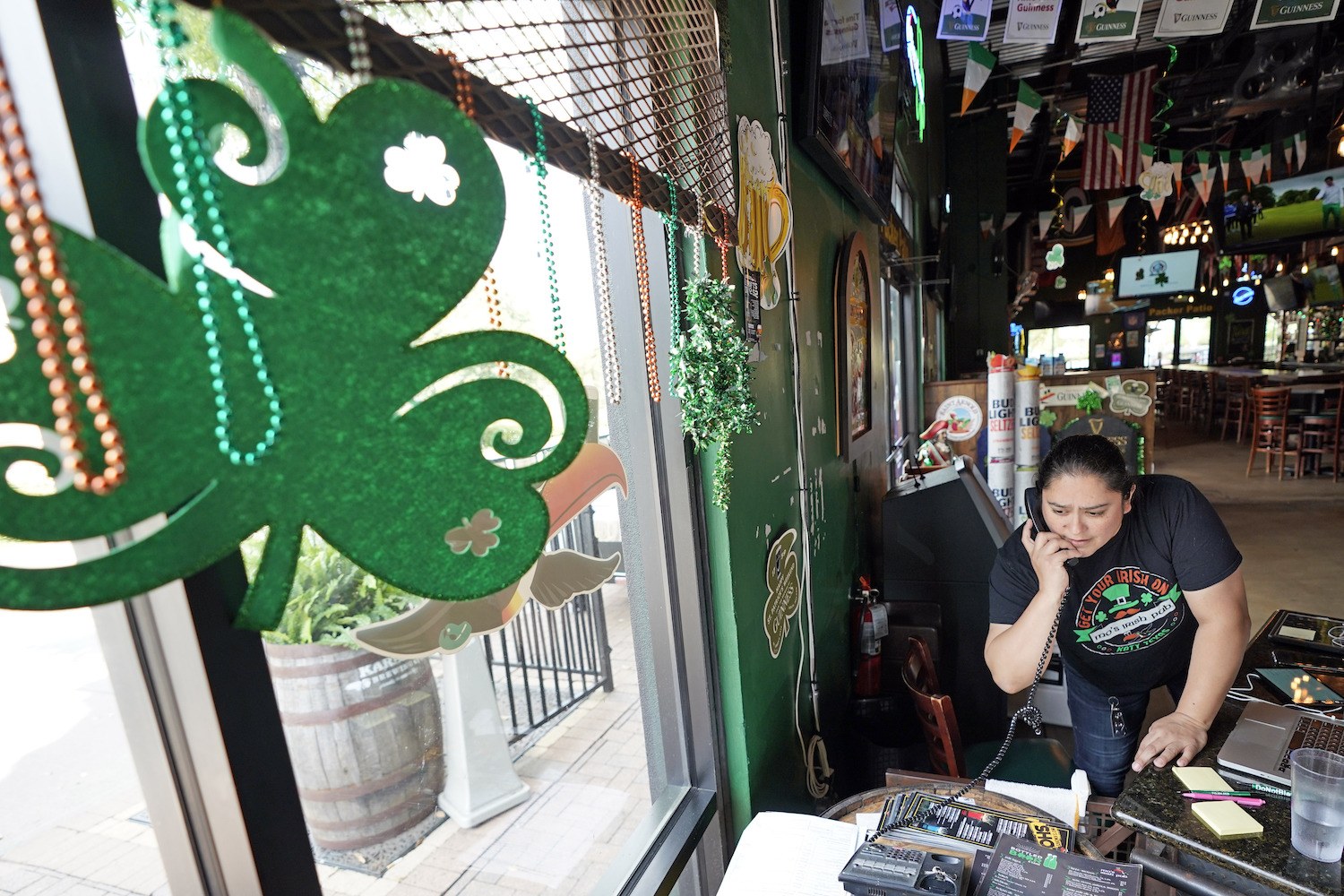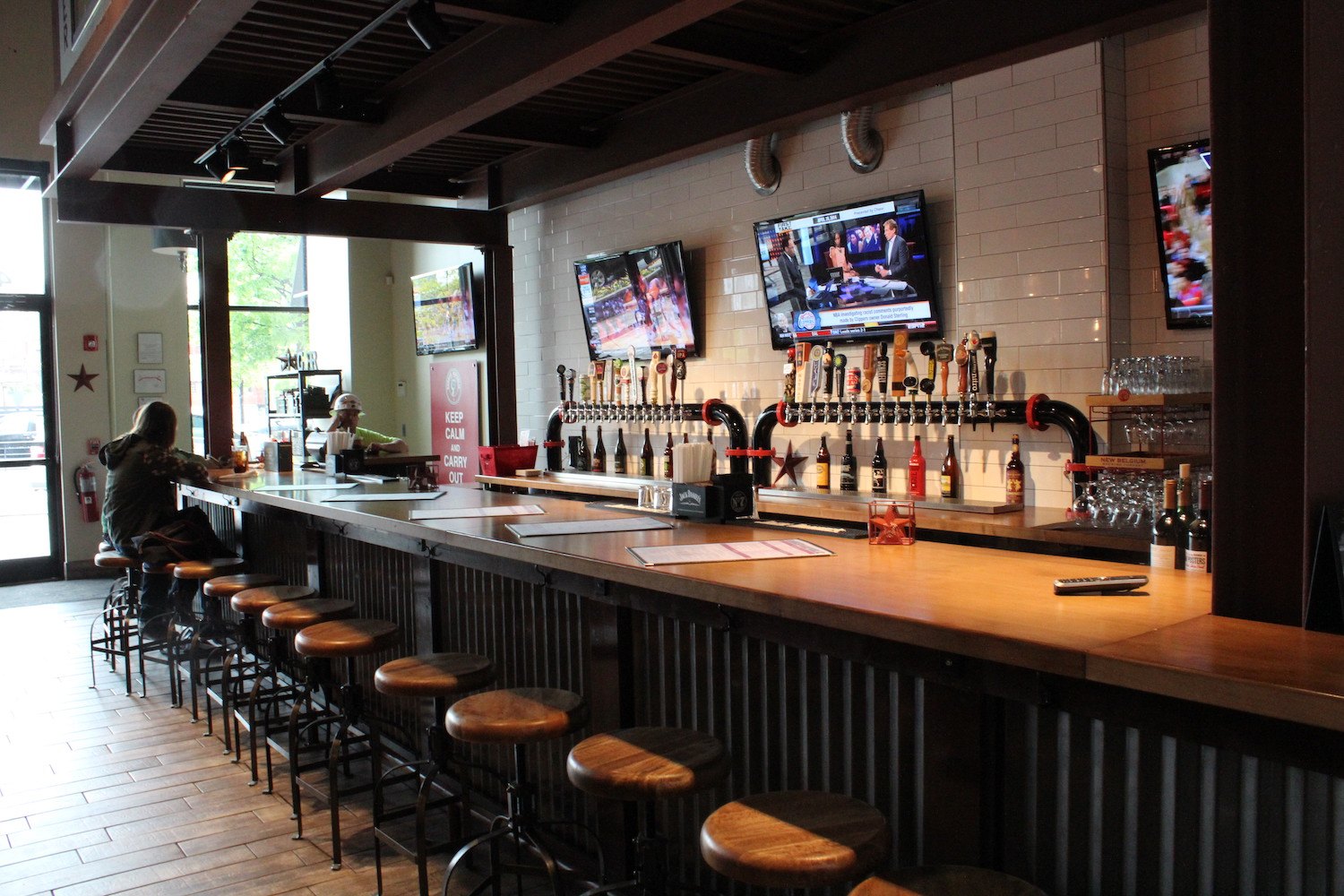
AP Photo/Matt York
Fewer volunteers. Higher prices. Customers ordered to shelter in place. As demand increases, food banks are scrambling to keep up.
Over the last few weeks, everything has changed at White Center Food Bank in Seattle, Washington.
In normal times, the food bank operates almost like a grocery store, inviting clients inside to select their own food after scheduling an appointment. But around the first week of March, as cases of Covid-19 popped up across the county, the staff began aggressively sanitizing all surfaces, in hopes that stricter protocols would keep the virus at bay. At the time, area restaurants were doing the same. None of it lasted long. “We tried to keep the grocery store model open for as long as it was a reasonable solution, but we realized pretty quickly that we had to change our service model,” says executive director Marelle Habenicht.
“You had a lot of families that literally had nothing.”
Volunteers, many of them senior citizens, began canceling their shifts for fear of contracting the virus. At the same time, demand soared: Panicked shoppers were making big purchases and emptying grocery store shelves, leaving little left for Seattle residents without ready cash for three weeks worth of groceries. “They really cleared everything out for those folks who don’t have those extra funds. They weren’t able to get anything at all. And so you had a lot of families that literally had nothing,” Habenicht says.
As food banks across the country rush to adapt to the new normal, the ground beneath them is shifting every day. Unprecedented levels of unemployment have driven droves of people to seek emergency food assistance, often for the first time. Normal supply chains have shifted, and food has gotten more expensive. Volunteer-driven labor forces have shrunk. Yet many places are serving up more meals—hot, cold, on-site, and via delivery—than ever before. And if shelter-in-place intensifies into full-blown lockdowns, food banks will have to pivot yet again to meet demand. Help may be on the way, but the details are unclear: The Senate version of the CARES Act, which has yet to pass in the House, includes $450 million for food banks and other emergency food assistance.
White Center quickly shifted to a drive-up model, asking families to complete order forms and hand them off to volunteers who completed the shopping inside. It provided translation services for the customers who didn’t speak English—more than half. “Choice is really important. We’ve got a really, really diverse population, and not all cultures eat the same,” Habenicht says. “It’s really important to be respectful of that, even during emergency times.” Members of the community and even the board of directors filled volunteer scheduling holes. The United Way and job search platform Idealist sent more volunteers their way. And the local bus system for seniors and disabled people began delivering food to people who requested it.
“The next few weeks to months are going to prove critical.”
Yet even as so many pieces came together, others fell apart. Food donations from grocery stores and individuals dried up. The distributor that provides much of White Center’s fresh produce, eggs, milk, and meat began talking about switching to an emergency food model, meaning it would only deal in shelf-stable products. That concerned Habenicht. “Our community is so diverse, and we work with so many immigrants and refugees. Canned and boxed food is not food to them. So it makes us really nervous to move to the shelf-stable model because a lot of our families, they … won’t take them,” she says.
Different states are coping with these food bank strains in a range of ways. In California, for instance, Governor Gavin Newsom called in the National Guard to assist with food bank operations. Nearly 500 service members have been sent to six counties as regular volunteers observed the statewide shelter-in-place order. Earlier this week, Andrew Cheyne, director of government affairs at the California Association of Food Banks, said the Guard members are largely filling in for absent volunteers. “This first wave of support is really oriented around the professional staffing to maintain what really is a daily operation—the logistics of receiving food, processing that, and then getting it out the door to the community,” he says.
Elsewhere in the state, food banks are looking at ramping up capacity, and in some cases considering opening whole new facilities. They’re also looking at expanding delivery options for homebound seniors, and exploring the potential of partnering with private industry to handle logistics. “The next few weeks to months are going to prove critical to ensure that we can innovate models and develop the infrastructure to make sure that everyone has enough to eat and avoid hunger as a secondary crisis,” Cheyne says.
“With all the restaurants closed and the run on grocery stores, all those prices are going up and there’s not as much available for us to purchase.”
At Northwest Harvest, a hunger relief agency in Seattle, staff and volunteers are packing up three different types of bags: shelf-stable supplies, fresh produce, and ready-to-eat meals. Like White Center, Northwest Harvest operates using a grocery-store model in normal times. The pivot to pickup was not without its hiccups, however. Whereas 80 volunteers used to work on a shift, the food bank has had to reduce the number to 10-12 in order to promote responsible social distancing. And once they began distributing pre-packed bags, they quickly heard from their customers (via interpreters) that some of the shelf-stable items were not getting used.
But perhaps the biggest concern is the rising cost of food, says Jordan Rubin, Northwest Harvest’s communications director. “We’re one of the largest purchasers of food in the state, and we can buy at a great bulk rate,” he says. “But with all the restaurants closed and the run on grocery stores, all those prices are going up and there’s not as much available for us to purchase,” he added.
Rubin said he’d get back to me with specifics on how much food prices had increased. Later, in an email, he wrote that he’d asked the procurement team which items were costing more, or had proved harder to find. “They all laughed at the same time,” he wrote. “Answer is EVERYTHING!” Previous food bank bulk prices are currently unavailable, and Northwest Harvest may have to pay retail prices for new supplies.
“That makes me pretty nervous.”
Rather than buy in bulk, White Center Food Bank tries to source as much food as possible from places like grocery stores where it would otherwise be wasted. The team grew 2,000 pounds of produce in an on-site garden last year, and she got an additional 3,200 pounds of produce from CitySoil Farm, an educational operation at a nearby wastewater treatment plant. This year, White Center coordinated with CitySoil on planting schedules that will maximize yield and delight their customers. Last summer, near the Cambodian new year, the food bank received several pallets of dragon fruit. “They were so beautiful and so popular,” she says. Later, staff noticed the fruits were selling for $10 each in local grocery stores. Gardens manager Mara Bernard then secured four dragon fruit cacti to grow in the White Center’s greenhouse so that she could continue to provide the fruits for free.
White Center’s sourcing efforts paid off, too: Last year, they spent just $18,000 on direct purchases, plus an additional $30,000 on $5 gift cards for customers to spend at grocery stores. For a total of less than $50,000, White Center distributed 1.2 million pounds of food.
Now, those supply chains are in jeopardy. CitySoil Farm has shut down, because it’s primarily a teaching farm and not necessarily a local food purveyor. (Habenicht is hoping to get the farm reopened; she’s sent a letter to local representatives asking for special consideration.) Food rescue operations aren’t very promising, either, simply because there isn’t much food to rescue. “We are going to have to shift back to simple purchasing behaviors and that makes me pretty nervous,” she says.
Habenicht is worried that she won’t have much fresh food to offer clients who aren’t accustomed to cooking with canned or dried staples. The triple whammy of the untended garden, the disappearance of reclaimed food, and her distributor’s decision to stock only shelf-stable products, has left her without many options. “It’s going to be a huge hit,” she says.


